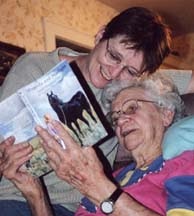Larry Brooks, bestselling psychological thriller author, screenwriter, and instructor (www.storyfix.com) advocated that a writer, if she wants to be published, must plan. Lorna Landvik, a successful novelist, strictly listens to the voices of the characters in her head as they present themselves and writes what they tell her. According to Brooks definition, she is a pantser. He is a planner. Many bestselling authors plan their novels and know the beginning, middle and ending before they begin to write. There are others authors who say they have no idea how their novels will end when they start. So who is right?
As Brooks explained, neither method is right or wrong, as long as your end product is one that readers will read. In order for an agent or publisher to be interested, however, there are criteria you must follow, whichever method you use. And as far as method is concerned, its not black and white. Most of us fall somewhere in the middle along the continuum between the "anal retentive," plotting-every-single-scene-before-you-start planner, and the fly-by-the-seat-of-your-pants, no-forethought-whatsoever pantser.
As I see it, and judging from my experience, the degree of "pantsing" you do will probably determine the number of rewrites you will need to do in order to shape a well-crafted novel that will meet success in the marketplace. On the other hand, the completely anal retentive, plot-driven story will end up stilted and unrealistic without the "heart" that draws the reader in with empathy for the characters.
Which is better? The method that works for you. Whether you plan every detail, just roughly outline before you begin, or run with the ideas as they flow, aim for a plot so gripping and characters so believable and sympathetic that the reader will have no idea which method you used in getting there.

